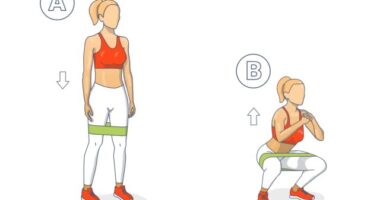
Decoding The Visual Pathway: Dr. Mandeep Singh Basu, Director of Dr. Basu Eye Hospital, examines the optic nerve’s functions and how it connects our eyes to our brains.
The human visual system is a remarkable network that enables the perception and interpretation of the environment. It consists of three essential parts: the eye, the brain’s visual cortex, and the neural network that links them. The optic nerve, sometimes called cranial nerve II or CN II, allows for this complex link. The optic nerve crucially facilitates visual data transmission from the eye to the brain, enabling us to see the world through our senses. Dr. Mandeep Singh Basu, Director of Dr. Basu Eye Hospital,examines the optic nerve’s functions and how it connects our eyes to our brains.
- Gathering Visual Information: Light enters the eye and then focuses on the retina to begin the visual information’s journey. A thin layer of specialized rods and cones that sense light and translate it into electrical signals makes up the retina. The optic nerve is created at the back of the eye by a concentrated bundle of nerve fibres that are formed after these impulses have passed through the layers of the retina. The primary relay station in the brain’s visual system, the lateral geniculate nucleus, receives signals from the optic nerve and relays them to the primary visual cortex for processing.
- The Nerve Fiber Convergence: The optic nerve comprises millions of optical fibres of glial cells. The optic nerve contains several fibres, which come together at the optic disc found at the posterior pole of the eye. The blind spot, where these fibres converge, is a visual field region where no light-sensitive receptors are present and visible information cannot be detected.
- Transmission to the Brain: The optic nerve fibres stretch backwards and cross over to the opposing side at the optic chiasm after leaving the eye at the optic disc. Thanks to this crossover, the brain can combine information from both eyes, which enables nerve fibres from each eye to flip sides. The base of the brain, below the hypothalamus, contains the optic chiasm, which is essential for the visual system.
- Visual Processing in Our Brain: On their journey, the thalamus’s lateral geniculate nucleus (LGN) is the next stop for the optic tracts. From there, axons from the LGN travel to various regions of the visual cortex through the upper and lower optic radiations. The upper radiation transmits data from the inferior visual field quadrants, while lower radiation transmits information from the superior visual field quadrants. The visual cortex, where the brain interprets sensory information and produces appropriate reactions depending on the observed optical inputs, is the final destination of both paths.
- Final Vision: We experience the visual world after the visual cortex decodes the electrical information. Our ability to interact and navigate is made possible by our brain’s recognition of objects, colours, shapes, and the physical architecture of our surroundings.
Conclusion
Our ability to see and understand the world depends on the optic nerve, the vital link between our eyes and brain. Its complex fibre network ensures that visual information is efficiently transmitted from the eye to the brain, ultimately shaping our perception of vision. The astonishing process of seeing can be better understood by comprehending the visual pathway and the function of the optic nerve. It also emphasizes how crucial it is to keep the optic nerve in good condition and intact.
READ RELATED: The #1 Healthiest Order at 9 Major Mexican Chains
Total Wellness is now just a click away.
Follow us on
Don’t Miss Out on the Latest Updates.
Subscribe to Our Newsletter Today!
window.addEventListener(‘load’, (event) => {
$(‘#commentbtn’).on(“click”,function(){
(function(d, s, id) { var js, fjs = d.getElementsByTagName(s)[0]; if (d.getElementById(id)) return; js = d.createElement(s); js.id = id; js.src = “//connect.facebook.net/en_US/sdk.js#xfbml=1&version=v2.3”; fjs.parentNode.insertBefore(js, fjs);}(document, ‘script’, ‘facebook-jssdk’));
$(“.cmntbox”).toggle();
});
});









